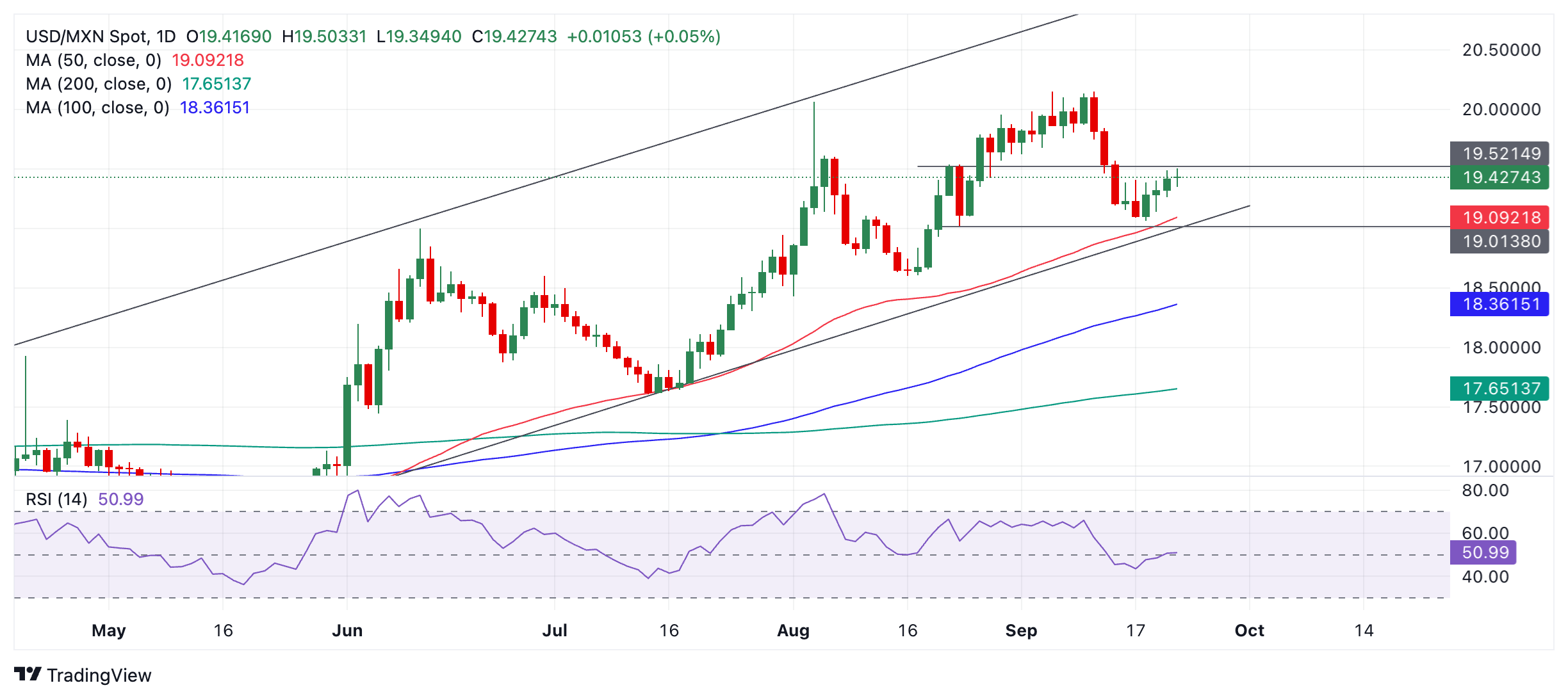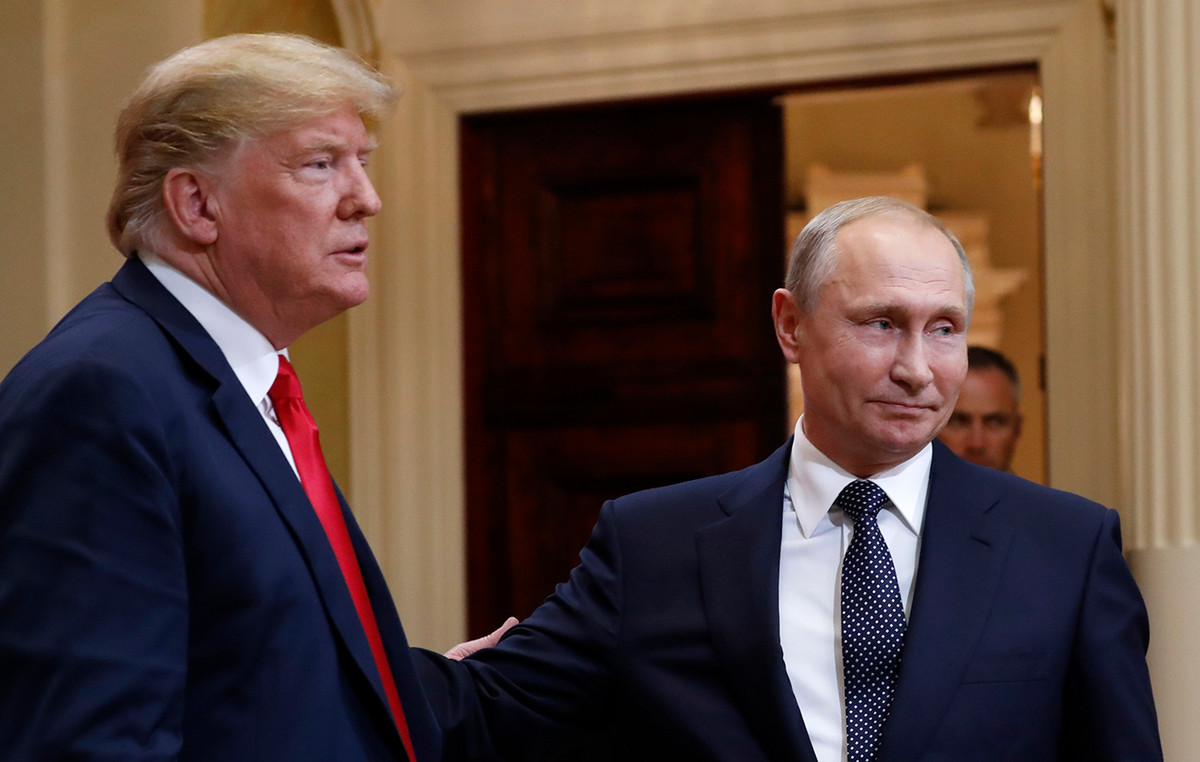- The Mexican Peso is preparing for a busy calendar week.
- The Bank of Mexico holds its monetary policy meeting on Thursday and key inflation data will be released on Tuesday.
- USD/MXN gains momentum as it climbs back inside its ascending channel.
The Mexican Peso (MXN) is swinging between slight gains and losses against its major peers on Monday ahead of a week in which a number of key economic data will be released and the Bank of Mexico (Banxico) will hold its September monetary policy meeting on Thursday, all factors that could influence the Peso.
Retail sales data on Monday showed a 0.6% drop in July compared with a 3.1% drop (revised down from 3.9%) year-over-year in June. The result was below expectations for a 0.5% drop.
Meanwhile, monthly retail sales rose 0.7% on a monthly basis in July after a 0.5% drop in June, according to data of the INEGI.
The Mexican Peso will feel the impact of data releases and the Banxico meeting
The Mexican Peso could be affected by national data releases and Banxico’s monetary policy meeting during the week.
On Tuesday, inflation for the first half of the month and core inflation for September will be published at 12:00 GMT. Previous data showed a 0.03% drop in inflation and a 0.1% rise in core inflation. If the new figures are higher, they could influence Banxico’s decision on Thursday. Higher inflation will increase the likelihood that the central bank will keep interest rates high and vice versa for lower inflation.
On Thursday, Banxico will hold its monetary policy meeting and could decide to adjust its key interest rate, currently at 10.75%. Most economists think the bank will cut by 0.25%, taking it to 10.50%. The expectation of lower interest rates is generally negative for a currency, as it reduces foreign capital inflows.
At the August meeting, Banxico decided to cut interest rates by 0.25% (25 bp), taking its official rate from 11.00% to 10.75%. The decision was a close one, with only three members voting in favor of the cut versus two who wanted to keep rates where they were.
“Some members felt that the slowdown in activity was larger than expected and that risks are skewed to the downside. All said that disinflation was expected to continue, but most felt that the balance of risks to inflation was skewed to the upside and that the inflation environment remains complex. Since that meeting, inflation readings have fallen further. Banxico’s next meeting is on September 26 and if disinflation continues, another 25bp cut to 10.50% looks likely. The swaps market is pricing in 175bp of easing over the next 12 months,” says Dr Win Thin, Global Head of Markets Strategy at Brown Brothers Harriman (BBH).
Finally, trade balance data will be released on Friday. This recorded a deficit of $0.072 billion and a surplus of $1.168 billion in seasonally adjusted terms in August. Generally, consistent surpluses are positive for a currency and vice versa for deficits.
Technical Analysis: USD/MXN establishes a short-term bullish trend
USD/MXN continues its rise on the fourth day after finding technical support at the base of a long-term ascending channel.
Although the pair fell sharply last week, it found key support at the base of a long-term ascending channel and at the 50-day simple moving average just above 19.00, which has so far prevented a deeper decline.
USD/MXN Daily Chart
There is a possibility that the USD/MXN has found stability at these support levels and has started a short-term uptrend within the channel. It is already in a medium- and long-term uptrend, so the direction of the “current” is north.
A close above 19.53 (August 23 high), however, would further confirm that the pair was in a short-term uptrend.
Banxico FAQs
The Bank of Mexico, also known as Banxico, is the country’s central bank. Its mission is to preserve the value of Mexico’s currency, the Mexican Peso (MXN), and to set monetary policy. To do so, its primary goal is to maintain low and stable inflation within target levels (at or near its 3% target, the midpoint of a tolerance band of between 2% and 4%).
Banxico’s main tool for guiding monetary policy is setting interest rates. When inflation is above the target, the bank will try to control it by raising rates, making it more expensive for households and businesses to borrow money and thus cooling the economy. Higher interest rates are generally positive for the Mexican Peso (MXN), as they generate higher returns, making the country a more attractive place for investors. Conversely, lower interest rates tend to weaken the MXN. The rate differential with the Dollar, or how Banxico is expected to set interest rates compared to the US Federal Reserve (Fed), is a key factor.
Banxico meets eight times a year and its monetary policy is heavily influenced by decisions of the US Federal Reserve (Fed). Therefore, the central bank’s decision-making committee usually meets a week after the Federal Reserve. By doing so, Banxico reacts to and sometimes anticipates the monetary policy measures set by the Federal Reserve. For example, after the Covid-19 pandemic, before the Fed raised rates, Banxico did so first in an attempt to decrease the chances of a substantial depreciation of the Mexican Peso (MXN) and avoid capital outflows that could destabilize the country.
Source: Fx Street
I am Joshua Winder, a senior-level journalist and editor at World Stock Market. I specialize in covering news related to the stock market and economic trends. With more than 8 years of experience in this field, I have become an expert in financial reporting.








